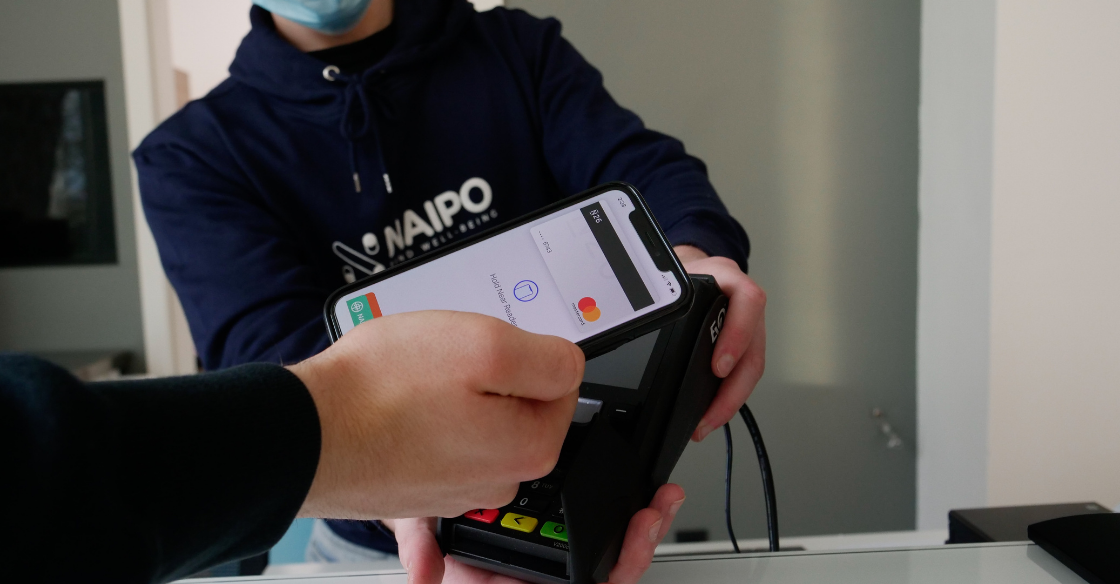Do you smell that? It’s the smell of freedom.
As a freelancer, you get to be your own boss. You work on your own schedule. You set your own rates. You can hustle when you need more cash and (theoretically) take a vacation whenever you want.
There is a downside, though. You no longer get a check from an employer direct deposited into your bank.
So, how exactly do you get paid? Once you’ve completed the work (or you’ve arranged to get paid in advance), what’s the best way to collect your cash?
The good news is that you have a ton of options. Each has pros and cons, so it’s a good idea to do some research before deciding which route is best for you. In this article, we’ll do a deep dive into the five best ways to get paid as a freelancer.
You’ve probably used third-party payment processors without even realizing it. Stripe, PayPal, Square, Venmo, Apple Pay, and Google Pay are some of the most common options you’ll encounter in both your business and personal life.
These companies function as a payment gateway for freelancers and businesses that don’t have a merchant account (which can be expensive to set up) but want the convenience and services that having a merchant account would provide.
With a third-party payment processor, you can accept credit cards, and your clients can pay you directly from the app. For example, you can accept credit cards with PayPal, or a client can pay directly through the PayPal portal.
This convenience can come at a cost, though. Third-party payment processors charge a significant percentage of each transaction, and those fees can go up at any time. For example, PayPal announced that starting in August 2021, they would raise online transaction fees from 2.9% plus $0.30 to 3.49% plus $0.49. And, since PayPal owns Venmo, the prices affect this platform as well.
This rate increase is unfortunate for a few important reasons:
1. That rate jump is significant. Unless you raise your rates to make up for the difference, you’re taking a pay cut.
2. The language surrounding the increase was cringeworthy. The company pointed to the “stickiness” of its platform as a way to exert “pricing power.” In plain English, PayPal says that since they’re popular, they can get away with raising rates, and their customers won’t want to deal with the inconvenience of looking for alternatives and switching systems.
3. Having rates go up significantly with little warning can make planning for the future a challenge. It can also cause you to feel like you’re not in control of your business.
| Pros | Cons |
| Convenient | High transaction fees |
| Portable | Your money can be held “hostage.” |
| You could be susceptible to fraudulent transactions. |

Short for Independent Sales Organization, an ISO is a company that offers payment processing options to businesses. They function as a kind of intermediary where they handle all of a business’s payment processing needs. This service can benefit a freelancer or solopreneur because an ISO can function as a one-stop-shop for all things payments.
Unlike third-party payment processors, an ISO tends to have flexible pricing options, allowing you to pay lower fees as you grow. ISOs also offer customized services and superior customer support.
| Pros | Cons |
| Flexible pricing | Longer payment processing times |
| Often the least expensive option for freelancers | |
| Great customer support | |
| Supplemental services included |
Though it’s rare to see someone write a check at the grocery store, businesses still rely heavily on checks to submit payments. A survey from 2020 found that 81% of companies still pay other firms with paper checks.
Checks are a convenient way to get paid, and they come with zero processing fees. The only disadvantages are that you have to wait for the proverbial “check in the mail,” and you run the risk of being hit with an “insufficient funds” message.
| Pros | Cons |
| No transaction fees | You have to wait to receive the check |
| Commonly used by other businesses | It takes time for the check to clear |
| You might look unprofessional if you don’t have a business name for your client to address the check to |
A wire transfer, also called an electronic funds transfer, is another way to get paid as a freelancer. In this system, payment flows from your client’s bank directly to your bank. If you’re both in the same country, the process can take as little as 24 hours, though it can take up to a few business days.
| Pros | Cons |
| You generally don’t have to pay anything to receive a transfer | Transfers may be costly between different banking companies |
| Most transfers are quick and easy | Clearance can take days |

You can also get paid as a freelancer through a variety of accounting software programs. Most commonly used by freelancers are QuickBooks, FreshBooks, Xero, Zoho Books, and more. We could go on for a while here.
| Pros | Cons |
| Tracks expenses as well as payments | High transaction fees |
| Helpful for preparing taxes | Subscription plans change frequently |
| Invoicing capabilities built-in | Processing time is sometimes slow |
Unless your freelance business involves doing accounting for other businesses, it’s unlikely that you love doing tasks like invoicing and keeping track of payments. However, this task is vital to the success of your business. There’s nothing worse than forgetting to invoice a client or finding a months-old uncashed check in a stack of mail.
By having an organized invoicing and payment system, you can stay on top of the money that’s owed and know which invoices have been paid without having a panicked “jump out of bed” moment at 2 a.m. when you realize that you never got paid for a large project.
Over the years, we’ve helped a lot of freelancers with their payment systems, and here are our top tips:
1. Use an invoicing tool. These tools come with pre-designed templates, or you can make your own branded versions. You can stay organized by having a uniform template design (don’t forget to number your invoices!).
2. Consider tracking payments with a CRM. With a CRM, you can also send payment reminders and keep track of any correspondence.
3. Have your clients fill out a credit card authorization form if they’re billed regularly. This allows you to bill a credit card directly each month without having to invoice a client and wait for payment.
There’s not going to be a one-size-fits-all solution that works for every freelancer. Plus, you might find that you want to accept payments in multiple ways. For example, you might decide to funnel the bulk of your payments through an ISO and accept checks and wire transfers in some circumstances.
In our opinion, an ISO is the best overall option because you get the features and services of a merchant processor without the high set-up costs and transaction fees. At Accredited Interchange, we give businesses of all sizes the power to accept payments professionally. Whether you’re a freelancer or a larger enterprise, we encourage you to contact us for more details.